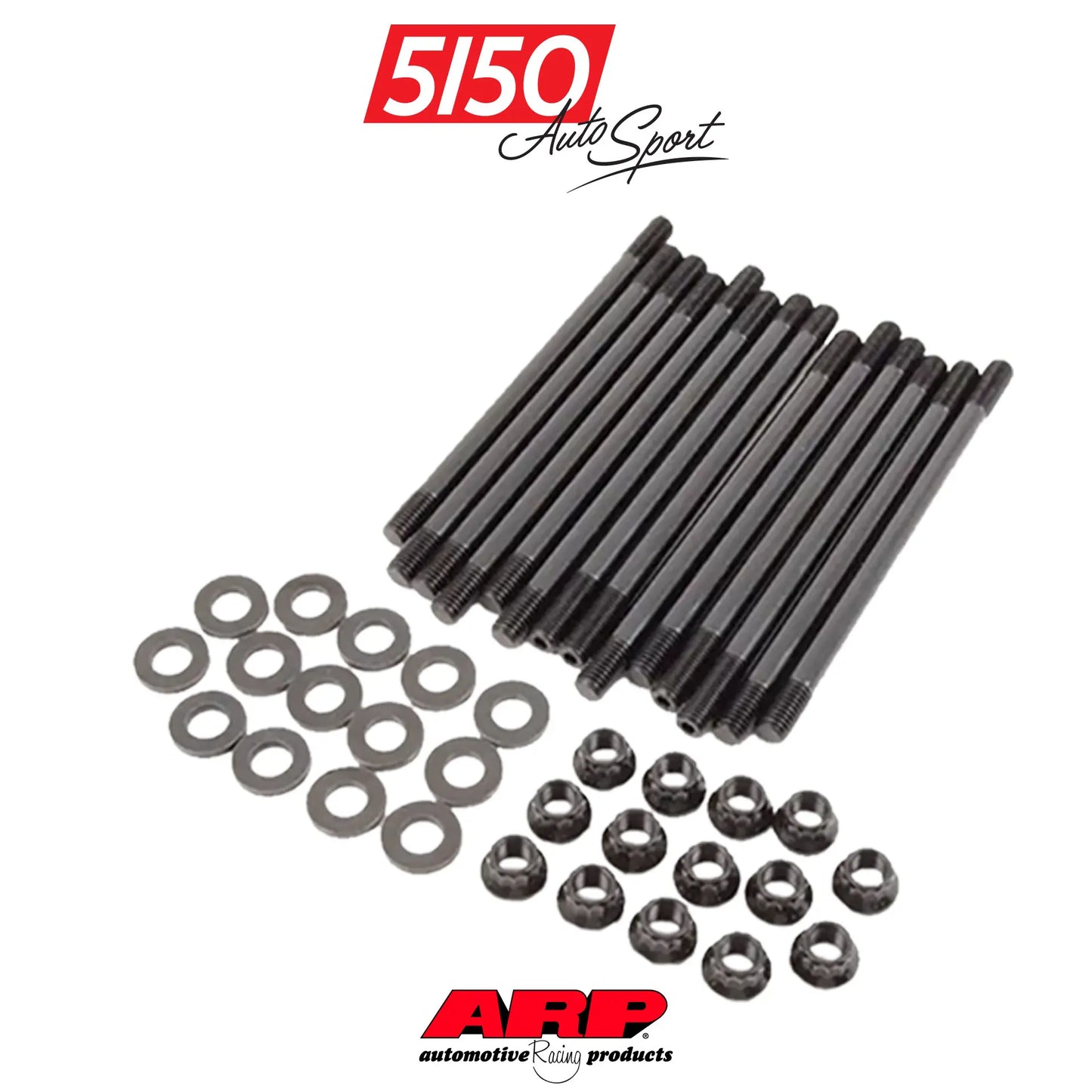ARP Automotive Racing Products
ARP Head Stud Kit, BMW S38 B35/B36
ARP Head Stud Kit, BMW S38 B35/B36
No se pudo cargar la disponibilidad de retiro
ARP custom-designed the ARP2000 head studs specifically for the S38B35 and S38B36 inline 6-cylinder engines found in the E24, E28, and E34 M5 and M6 chassis. These head studs provide various benefits upon installation, such as improved clamping force and better sealing of the head gasket, ultimately preventing head gasket failure. These benefits are especially important for high-performance or turbocharged engines that experience increased cylinder pressure, which can cause additional stress on the head gasket and bolts.
| 12 | 10 | 4 | 2 | 6 | 8 | 14 |
| 13 | 7 | 5 | 1 | 3 | 9 | 11 |
Please note: After initial assembly, it is necessary to allow the engine to complete a full heat cycle, then re-torque your head studs to spec. This means allowing the engine to warm up to its normal operating temperature, remain at operating temperature for several minutes to ensure each component is uniformly heated, then turned off and cooled completely to ambient temperature.
BMW S38B35 Applications:
BMW 5 Series
1985-1987 E28 M5 [European Market]
1987-1988 E28 M5 [American Market]
BMW 6 Series
1984-1989 E24 M635CSi [European Market]
1987-1989 E24 M6 [American Market]
BMW S38B36 Applications:
BMW 5 Series
1988-1992 E34 M5
Share
SKU:ARP-HSK-S38-B36
Ver todos los detalles

